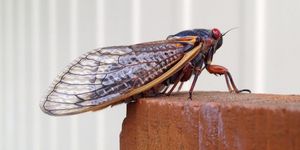Studies Confirm that Bottlenose Dolphins Vocalize to Synchronize Behaviors
The ability to communicate with one another to coordinate behaviors contributes to the success of social mammals, like bottlenose dolphins. According to a recent article from Science Magazine online, bottlenose dolphins are the only other animals—besides humans—to use vocal cues to cooperate. The article reports that scientists have suspected that vocalization is the key to dolphin behavior coordination for decades. Still, until recently, they did not have evidence to prove so due to the technical challenges of studying aquatic mammals. Additionally, dolphin vocalizations are emitted through their blowholes rather than their mouths, so researchers can't simply look to see if an animal is vocalizing.
A recent study from the Dolphin Research Center and the University of Bristol used underwater microphones to investigate how dolphins coordinate cooperation. This study was published just last week in The Royal Society online. According to the study, the experiments were conducted between January 2018 and August 2019 with four common bottlenose dolphins aged seven to 33. According to Science Magazine, the researchers used a four-hydrophone setup and above water cameras to track the dolphins' sounds.
In this study, the two pairs of bottlenose dolphins both used vocal signals to coordinate synchronized actions. However, the researchers are careful to acknowledge their small sample size and are wary of generalizing to all dolphins. The study reports that their results are strong enough to indicate that "some bottlenose dolphins have the cognitive capacity to use communication to actively coordinate their behavior in a cooperative context." These results confirm that "using vocal signals to facilitate cooperation is not just limited to humans." The dolphins in this study used a series of whistles to coordinate behaviors, although scientists didn't note if they were clicking when not whistling.
Science Magazine cites another study in France, which utilized a five-hydrophone setup that can identify which dolphin in a group is "speaking." In this study, researchers discovered that trained dolphins could backflip in-sync, touching the water's surface within one-thirtieth of 1 second of each other. Science Magazine reports that the dolphin group's dominant female emitted a clickstream that ended milliseconds before jumping. According to the study, this individual dolphin emitted clicks 98% of the time.
According to Science Magazine, scientists believe that studies on free-range dolphins will provide more insight. However, tracking these dolphins in open waters and using equipment similar to what was used in the controlled zoological or research center settings is challenging.
Sources: Science Magazine, Royal Society, Behavioural Processes









